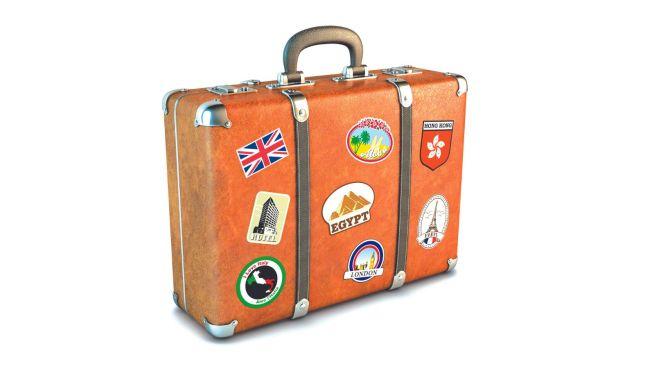Europe travel questions everyone’s asking
Europe is a bucket-list location, but when planning a trip, most people ask these questions.

Lifestyle
Don't miss out on the headlines from Lifestyle. Followed categories will be added to My News.
How insufferable have all those people been this year living their best European lives on your Instagram feed?
Hopefully you’ve been inspired to have a go at making everyone jealous next year. Judging by my Doc Holiday inbox, some of you have already booked, but many have a few queries. Here, I answer your most common questions about booking that European adventure.

When is the best time to go to Europe in 2024, and when should I book my flight?
It seemed like every other human was in Italy or the Greek Islands this past June, July and August. To avoid those summertime crowds, super-high prices and sweltering heat, travel during the shoulder seasons, April-May and September-October. The way climate change is going, I wouldn’t rule out early November for somewhere that isn’t a beach destination.
I asked Jason Hartley, Flight Centre’s head of global product, about the financial sweet spot for long-haul bookings. He said to aim to book 11 months in advance (or just as airlines release seats) for the best deal. That said, if you’re not travelling in a group and have a little flexibility on dates, it can be worth waiting for a last-minute seat. I don’t recommend doing that if you’re travelling with your family, but last week I bought an Etihad fare for a trip to Istanbul next month for a tad over $1500. Bargain!

What payment methods do you recommend in Europe?
I’ve always sworn by my debit card, which doesn’t attract any international ATM fees or charges provided a set amount goes into the account each month. ING, Bankwest and Citibank are three such providers who offer these cards and they are excellent for global travel. Generally, MasterCard and Visa debit cards work throughout Europe, but they will attract their fair share of ATM fees and currency conversion charges, so that’s something to look out for.
Travel money cards have their benefits. They work like a regular debit card, but you can load multiple currencies into the account and lock in an exchange rate when you deposit the funds. But take care to spend only in a currency loaded on the card; otherwise you’ll be hit with conversion charges. Other disadvantages include lengthy load times where you may not have access to your funds (have a backup) and issues with acceptance among merchants. Look at Wise Money Card and Resolute Standard; the former may have a cult following, but both have been awarded a five-star rating on Canstar.
I also recommend carrying a small amount of local currency – you’ll need it for street vendors, public toilets and the odd merchant who refuses to move into the 21st century.

What is the best way to travel around Europe? Can I take a hire car between countries?
You have several options, depending on where you visit and how much time you have. If, for instance, you’d like to visit Bulgaria’s beach resorts, then pop by Paris and London on the way home, I’d recommend flying with a low-cost airline such as Ryanair; a one-way ticket will set you pack around $140 (at the time of writing).
Obviously, while quick and convenient, jetting around multiple destinations isn’t the most environmentally sound option. Happily, Eurail’s network covers more than 30,000 destinations in 33 countries and you can either buy point-to-point journeys, or the Eurail Pass, which gives passengers access to most trains around Europe for a set number of days. I’ve travelled around Europe using the Global Pass and found it a wonderful way to get around.
Provided you get in early enough (book at least six months ahead), hiring a car to drive around Europe is also possible. Car rental companies such as Hertz and Avis allow drivers to take their rental cars between countries, but you’ll have to factor in cross-border charges, which can apply per country, per zone, or once you’ve finished your trip. If you plan to drop the car in a different country to where you picked it up, a one-way fee will also apply.
You can use your Australian driver’s licence in most countries, but you’ll need an international driving permit for others. These are available from the Australian Automobile Association for $42 and are valid for 12 months from the date of issue.

Are we supposed to tip in Europe and, if so, how much?
Yes and no. In some countries, such as France, a service charge of 15 per cent is automatically added to your bill (be sure to check), so tipping isn’t required. Of course, it’s still appreciated and most will round up or leave around five per cent as a discretionary tip. No service charge? Tipping 10 per cent is considered polite, and if you’re only having a drink, leaving a few coins is plenty.
Can you recommend an island getaway without the crowds – and cost – of Greece?
You don’t have to write off the Greek Islands. Rather than the likes of Santorini and Mykonos, aim for Antiparos which, despite having a similar whitewashed and bougainvillea-clad aesthetic, remains relatively overlooked my holidaymakers. It’s worth looking into Folegandros.
Beyond Greece, Sipan, the largest of Croatia’s Elaphiti Islands and about an hour by ferry from Dubrovnik, is ripe for discovery, while Portugal’s Azores archipelago gives tropical vibes in the middle of the Atlantic. The greatest surprise, however, and certainly the cheapest, is to consider the islands of Estonia. Among more than 2000, the top options to explore include Naissaar (about an hour by ferry from Tallinn) and Vormsi.

How far in advance should I book attractions?
Visit the website of each attraction you’d like to visit, note the ticket release dates, and add the dates to Google calendar so you get a prompt an hour before they’re due out. The timelines will vary. The Colosseum, for example, releases tickets 30 days ahead and they sell out fast so act quickly, particularly if you’re going in the northern summer. Tickets for the Eiffel Tower are released 60 days ahead. It isn’t only attractions you’ll need to book, but also accommodation, and key restaurants.
Where do I need a visa?
Australians travelling to Europe in 2023 don’t need a visa for countries in the Schengen Area (check smartraveller.gov.au for the list), but from 2024 we’ll need an ETIAS (European Travel Information and Authorisation System). This is an electronic system that completes a security check of visitors before they can enter 30 European countries, including France, Greece, Italy and Spain.
Applying for an ETIAS travel authorisation (7 euros) is straightforward; fill out the form on either the ETIAS website or the mobile app. Once approved, it will be linked to your passport and is valid for three years, or until your passport expires (whichever comes first). See etias.com for further information.

I’m not keen to travel independently in Europe. Would you recommend a cruise or a group tour?
It depends on the experience you’re after. With cruising (whether we’re talking ocean or river), the advantages include unpacking once and waking up in a new destination every morning (river cruises in particular tend to cruise overnight). You also have a little more flexibility, either opting to book shore excursions via the ship, or disembarking and doing your own thing.
The downside of cruising in Europe? Ports can be far from town so most of your time gets chewed up in transit, and you’re always on the clock. This means fewer opportunities for deep-dives into glorious cities such as Florence or Paris, which demand at least a few days.
Group touring allows you to enjoy a more authentic experience, with opportunities to stay in a range of accommodations, eat in a variety of local restaurants and have a little more time in the destinations you visit.
Depending on where you’re travelling, long distances can feel even longer when you’re confined to a coach, and unless you’ve chosen a tour company that allows for free time and a choice of excursions, there’s minimal wiggle room when it comes to doing your own thing. You’re also stuck with the other people in your group, for better or worse.

7 PACKING ESSENTIALS
Fabulous wardrobe aside, make sure the following items also make the cut.
1. A crossbody bag with plenty of pockets; with one hand clutching the strap, it’s a pickpocket deterrent.
2. A compact umbrella for the rain or, better yet, the northern sun. When you’re at attractions with limited shade, you’ll be grateful for the cover.
3. A reusable water bottle to avoid getting ripped off at cafes
4. A cover-up such as a light scarf or shawl; the perfect thing for visiting religious sites.
5. A universal adaptor
6. Comfortable walking shoes. Those cobblestone streets aren’t what you call friendly to feet.
7. A pair of water shoes if you’re heading to the (oh-so-pebbly) beach.
More Coverage
Originally published as Europe travel questions everyone’s asking





